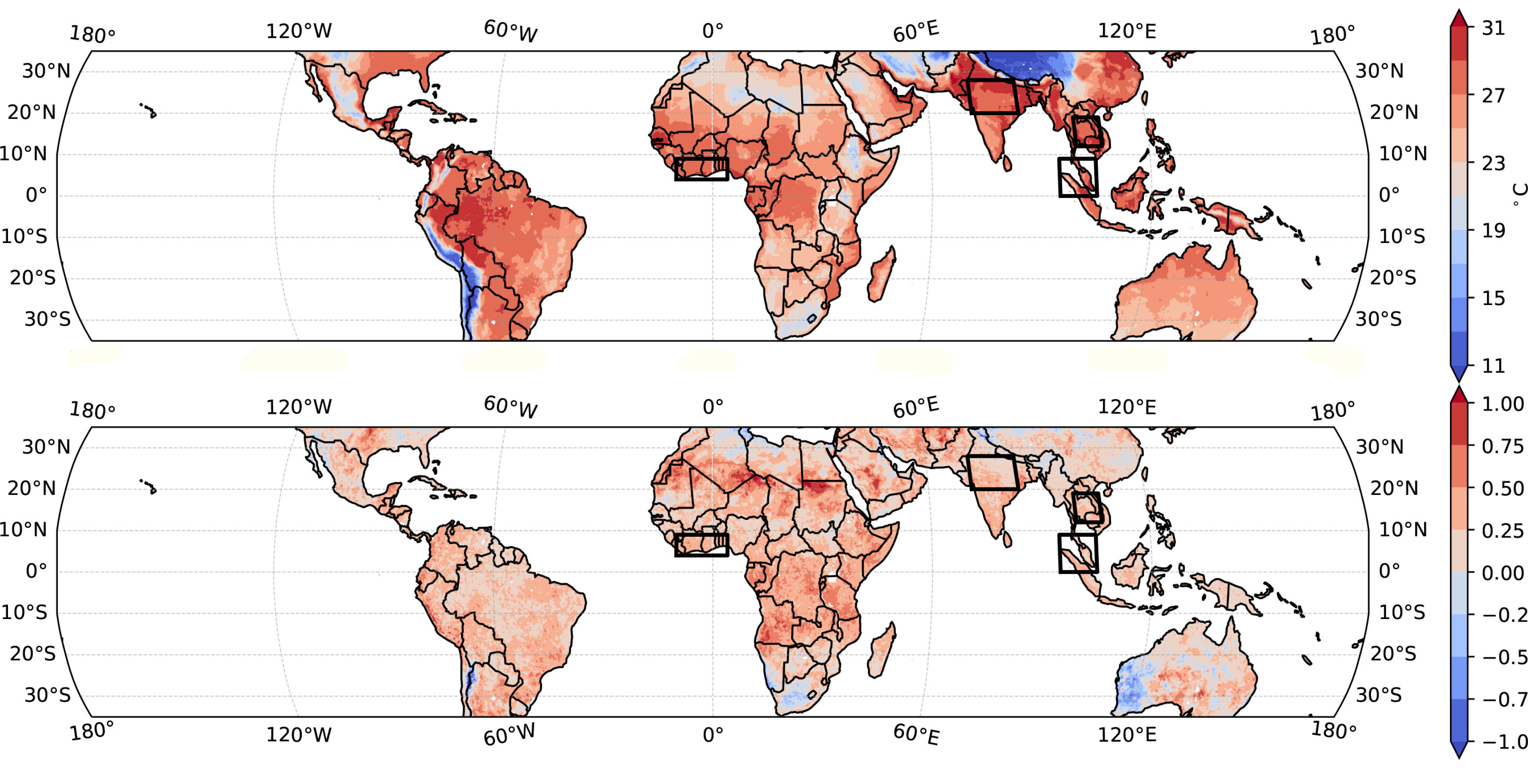Summer weather: significant health risks anticipated this season
Follow us on Google News (click on ☆)

A team of researchers from the University of California, Berkeley, led by Yi Zhang, a Miller Postdoctoral Fellow at UC Berkeley, has predicted record temperatures and humidity for the upcoming summer in a wide band around the equator. This includes densely populated areas such as India, much of Africa, Central and South America, Australia, as well as Florida and Texas.
These long-term forecasts are crucial for preparing for extreme heat events and protecting populations, animals, and crops. William Boos, a professor of Earth and Planetary Science at UC Berkeley and a co-author of the study, stresses the importance of humanitarian aid, medical care, and the distribution of agricultural resources tailored to these projections.
Temperature records are common every year, but the combination of high heat and humidity poses a major risk to human health. High humidity prevents the evaporation of sweat, reducing its cooling effect and increasing the risk of exceeding the body's tolerable temperature limits.
The study, published in the journal Geophysical Research Letters, combines the impact of El Niño, a climatic phenomenon characterized by warming of the ocean surface in the eastern Pacific, with that of global warming. The results indicate an average wet-bulb temperature (the temperature of air saturated with moisture) forecast of 79°F (26.2°C) and a 68% probability of surpassing existing records.

Maps of the tropics showing the authors' predicted annual maximum wet-bulb temperatures for the coming summer, considering current El Niño conditions and global warming (top) and the incremental effect due solely to El Niño (bottom). The reddest areas are expected to have the highest wet-bulb temperatures—a measure combining the effects of humidity and temperature. Black frames outline the regions analyzed in detail. Credit: Yi Zhang, UC Berkeley
The analysis of data on heat and humidity extremes over the past 45 years shows that high-altitude temperatures, peaking about five months after the El Niño peak, control heat and humidity at ground level. This year, El Niño peaked in December 2023, boosting the forecasts for this summer.
This prediction quantifies the combined influences of El Niño and global warming on wet-bulb heat stress, marking a new milestone in climate research. Despite uncertainty due to natural phenomena like volcanic eruptions or shifts to La Niña conditions, this analysis provides valuable information for preparing for the imminent risks.